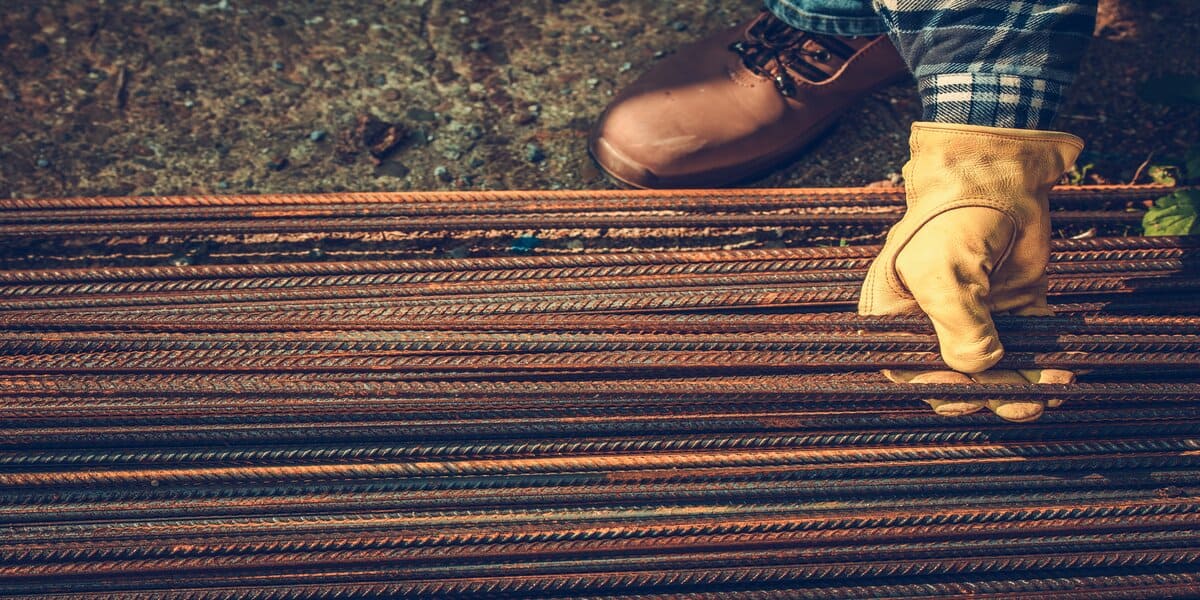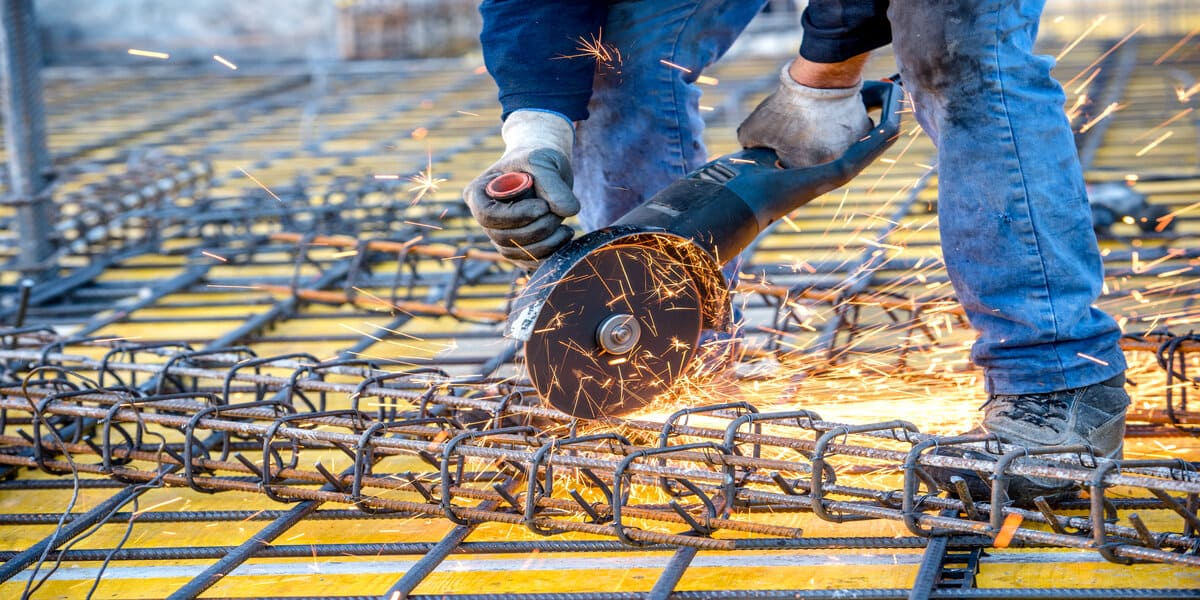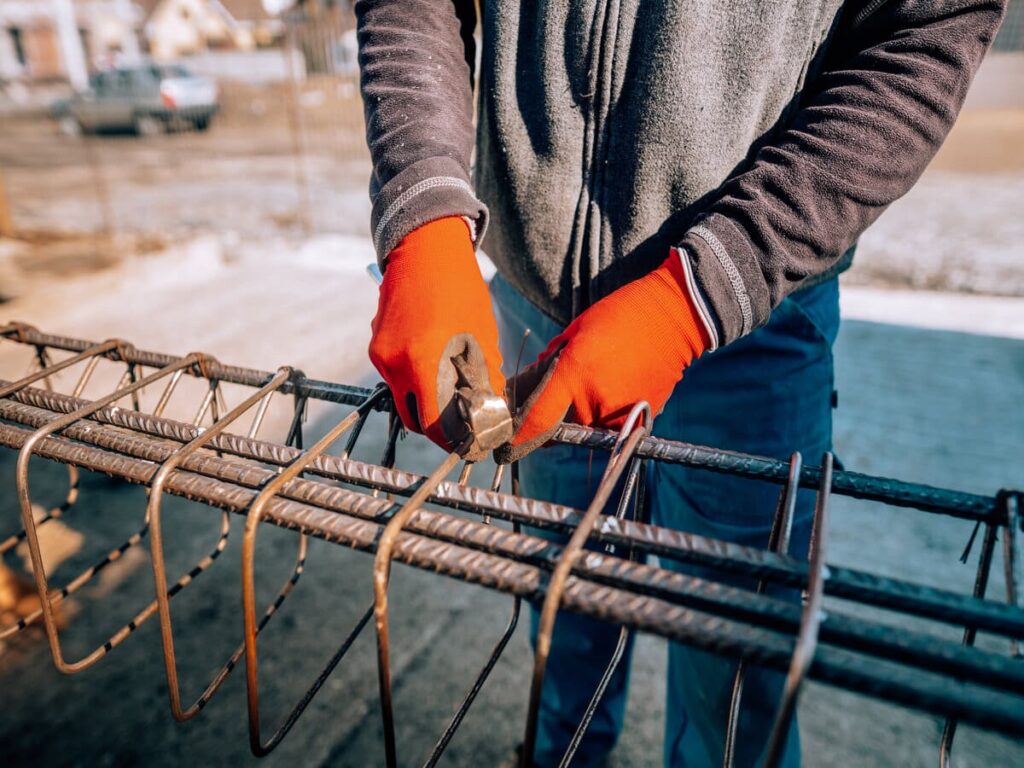In construction, where efficiency is very important, every inch of material has a significant value. Rebar, a shortened term for reinforcing bars, is a very important element in large-scale projects. It refers to a steel bar or a mesh of steel wires utilized as a tension device in reinforced concrete and masonry structures. Cutting rebar is intricate due to the costly waste it generates. Optimal cutting techniques and thorough planning do a lot to reduce the disposal of this precious resource.
Rebar cutting involves precise measurements and tools to ensure accuracy and minimize material wastage. The choice of cutting method, whether manual or machine-assisted, affects the efficiency and cost-effectiveness of the construction project. Environmental considerations also come into play, showing the importance of sustainable practices in the utilization and disposal of rebar. By integrating advanced cutting technologies and sustainable approaches, construction teams can enhance efficiency while reducing environmental impact.
Understanding the Importance of Minimizing Rebar Waste
The initial stages of any construction project are very important, demanding careful planning and strategic allocation of resources. Among the many essential elements, steel stands out as a major player, often accounting for a big portion of the overall project budget. Particularly, a specialized steel product, rebar, demands careful ordering, handling, and precise cutting to maximize material efficiency. By minimizing waste and optimizing rebar usage, construction projects can enhance their financial sustainability, reducing avoidable expenses and lessening their environmental footprint. This benefits the project’s bottom line and contributes to a more eco-conscious approach in the construction industry.

The Cutting Rebar Procedure: Methods and Best Practices
Choosing the Right Tools
The selection of tools is a step in the cutting process. Matching the right tool with the specific size and type of rebar is important to ensure a clean and efficient cut. Different sizes and types of rebar call for varying tools tailored to their characteristics. Some common tools used for rebar cutting include:
- Rebar cutters: These specialized tools are meticulously crafted to swiftly and precisely cut reinforcing bars with utmost cleanliness. They come in versatile options, including handheld tools for convenient usage and electric/hydraulic models for enhanced efficiency. These tools cater to various needs, from portable cutters for on-site tasks to robust, industrial-grade cutters specifically crafted for fabrication shops.
- Portable grinders: Equipped with cutting wheels designed to slice through tough rebar, these versatile tools offer a solution for cutting various materials. However, while they can handle rebar-cutting tasks, their efficiency and precision may not match those of dedicated rebar cutters specifically tailored for this purpose.
- Hacksaws and abrasive saws: These basic tools are designed to handle light-duty rebar-cutting tasks. While they can effectively handle smaller projects, they may require more time to complete tasks than advanced equipment, making them less cost-effective for large-scale projects.
Preparing the Cutting Area
Before cutting rebar, it’s important to prepare the work area thoroughly. Start by meticulously inspecting the cutting path and removing any debris or obstructions. This step ensures a clean and safe environment for the cutting process. Consider cordoning off the area with caution tape or barriers to prevent accidents and maintain a well-controlled workspace that prioritizes safety and efficiency.
Safety Measures
Safety should always be the top concern when handling rebar-cutting tasks. Employees must be equipped with the necessary personal protective equipment (PPE). Only trained personnel well-versed in properly operating cutting tools can handle these tasks. Also, a well-stocked first aid kit should be easily accessible at the worksite to address unforeseen emergencies during the cutting process promptly.
Cutting Rebar Techniques
Precision and accuracy stand as the fundamental pillars for every cutting task. When it comes to cutting rebar, employing the following techniques can greatly reduce material waste and guarantee that the end product is prepared for immediate utilization, eliminating the need for further processing:
- Measuring twice, cutting once: This age-old adage is especially true for rebar cutting. To avoid errors, take accurate measurements and double-check them before cutting.
- One-cut approach: Aim to cut through the rebar in a single pass whenever possible. Stopping and starting can lead to jagged edges and a need for further trimming.
- Using cutting guides: For straight cuts, a cutting guide can be a helpful tool to ensure the saw or cutter follows a straight line, reducing the likelihood of a crooked cut that may need to be redone.
Waste Management
Collecting and effectively managing the waste material generated from rebar cutting is an important component of the broader waste reduction initiative. This waste material, which includes excess rebar pieces and metal shavings, can be repurposed through in-house recycling processes or by utilizing the services of a third-party metal recycling facility. Adopting these sustainable practices can recover some costs and minimize the overall environmental impact, contributing to a more eco-friendly approach in the construction industry.
Technology and Innovation in Rebar Cutting
The drive for efficiency in modern construction has fueled the development of cutting-edge technologies designed to streamline the process of rebar cutting. These advancements encompass a range of cutting-edge solutions, including:
- – Plasma cutting systems: Originally employed for diverse metal types, plasma cutting systems have been applied to rebar cutting, delivering swift and precise results.
- – Water jet cutting: This cold-cutting technique utilizes a high-pressure water stream to slice through rebar without producing the dust or fumes associated with traditional methods, ensuring a cleaner process.
- – Robotic rebar cutters: In situations where precision is necessary, robotic cutters guarantee that each cut adheres precisely to the project’s specifications. This meticulous approach minimizes errors and material wastage, optimizing overall efficiency and quality in construction projects.
Case Studies and Success Stories
To truly illustrate the big effects of mindful rebar cutting, let’s explore real-world examples where a conscious effort to reduce waste has led to remarkable cost savings and increased overall project efficiency and effectiveness.
High-Rise Construction Project
A company strategically implemented innovative rebar-cutting techniques for its upcoming high-rise construction project. By integrating cutting-edge robot-assisted cutting methods and implementing efficient waste management practices, the company successfully achieved positive outcomes. This proactive approach led to a 20% decrease in the rebar required for the project, translating to big cost savings of over $100,000. These advanced techniques optimized efficiency and showcased the company’s commitment to using technology for sustainable construction practices.
Infrastructure Upgrade
The strategic implementation of portable rebar cutters proved instrumental in an infrastructure upgrade project to enhance structural integrity and efficiency. These efficient tools enabled swift and precise cuts on-site, reducing operational delays and material wastage. The seamless integration of these cutters not only streamlined project timelines but also led to a commendable 15% decrease in rebar waste, showcasing a commitment to sustainable construction practices and cost-effective project management.
Minimizing Rebar Waste
Reducing rebar waste is a multifaceted approach that involves using the right tools and techniques, alongside meticulous planning and measurement. By adopting the best practices shared in this post, construction companies can not only lessen their environmental impact but also realize substantial cost savings. As the construction industry pushes towards greater sustainability and efficiency, managing rebar waste emerges as a primary area for innovation and improvement.

Frequently Asked Questions
What Tools are Best for Cutting Rebar On-site?
The most effective tools for cutting rebar on-site are portable hydraulic shears and rebar cutters.
How Can Careful Planning Help Minimize Waste when Cutting Rebar?
Careful planning involves accurately measuring the necessary lengths of rebar before cutting, considering the placement and orientation of rebar to minimize scrap pieces, and coordinating with other trades to ensure efficient use of materials.
Is it Possible to Eliminate Waste When Cutting Rebar?
While eliminating waste may not be possible, precise tools and techniques and proper planning measures can significantly reduce it and improve efficiency.
How Can Using High-Quality Rebar-Cutting Tools Improve the Overall Construction Process?
Using high-quality rebar-cutting tools can lead to more precise and accurate cuts, reducing the need for rework and minimizing waste. This saves time and money and maintains the project’s structural integrity.
Further Readings
How to Cut Rebar And What Tools to Use
6 Smart Tips to Reduce Waste on Your Construction Site
Our Locations
Get a Quote Now
